El Hierro may be the second-smallest Canary Island, but during our stay we realized that it’s also one of the most diverse islands of the archipelago. As a matter of fact, locals told us that El Hierro combines all the elements that make its bigger neighbours famous and it’s easy to see what they mean.
There are rough volcanic landscapes and evergreen forests, pine-studded mountain slopes and verdant pastures. Apart from that, the island harbours some interesting museums, beautiful viewpoints and plenty of spots to take a dip.
We spent about a week on the island and certainly didn’t get bored. If you’re on a tighter schedule, I’d still suggest spending at least three days on El Hierro to see the island’s top sights. While a day trip from a neighbouring island would be possible in theory, you could really only scratch the surface in that time.
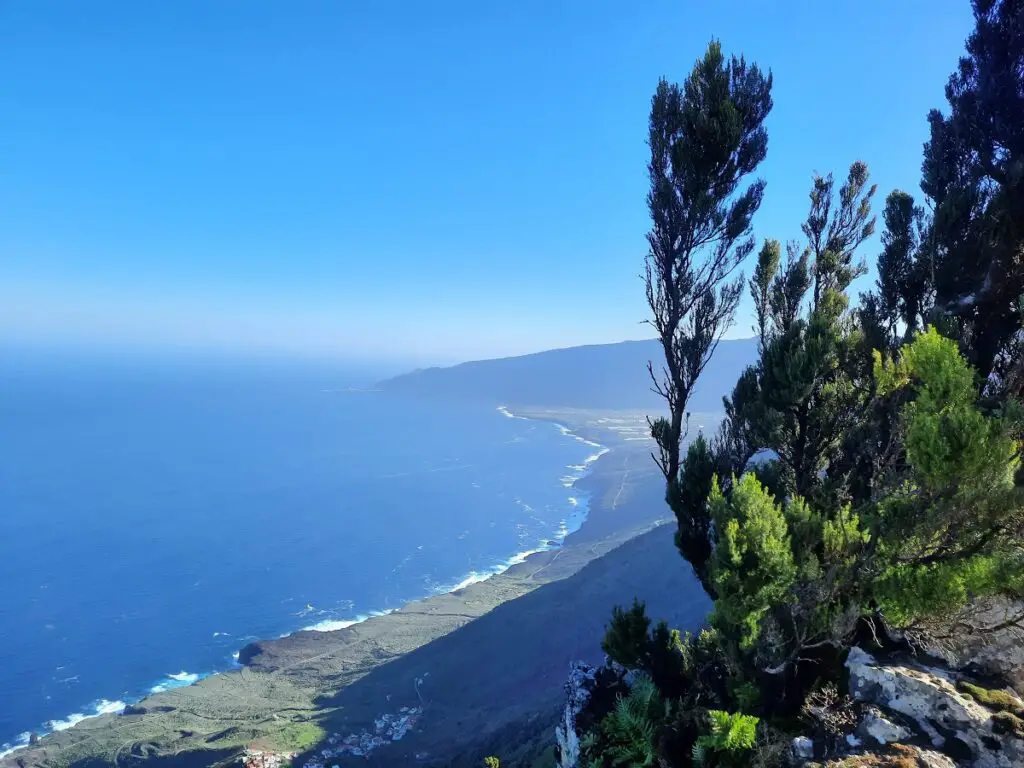
This post may contain affiliate links and I might earn a small commission at no additional cost to you. For more info click here.
How to get Around on El Hierro
The island has a reliable bus network covering the eastern and northern coast (You can check the connections on this website), but to reach the more remote Western part of El Hierro, you’ll need your own set of wheels.
You could hire a taxi, but if you want to do some exploring, prices will add up quickly, so a rental car is definitely the better option cost-wise. If you decide to rent a car, have a look below to find a good deal.
Day 1: Eastern El Hierro
On your first day, explore El Hierro’s eastern part, including the capital of Valverde, the holy Garoé Tree and the wonderfully verdant northeastern tip of the island.
The Capital Valverde
Start your exploring in El Hierro’s quaint capital Valverde. A great place to have some breakfast here is the cool Boomerang Café or you could grab a Cheesecake at the Fábrica de Quesadillas.

Afterwards, check out the small main square and biggest church on the island and well as the Casa de las Quinteras, which has interesting displays on El Hierro’s traditional crafts.
The holy Arbol Garoé Tree
Next, visit the Garoé Tree, which was venerated by the native Bimbache People due to its ability to condense water out of low-passing clouds. It’s one of the island’s symbols and can be reached by an easy 45 minute walk from the village of San Andrés.
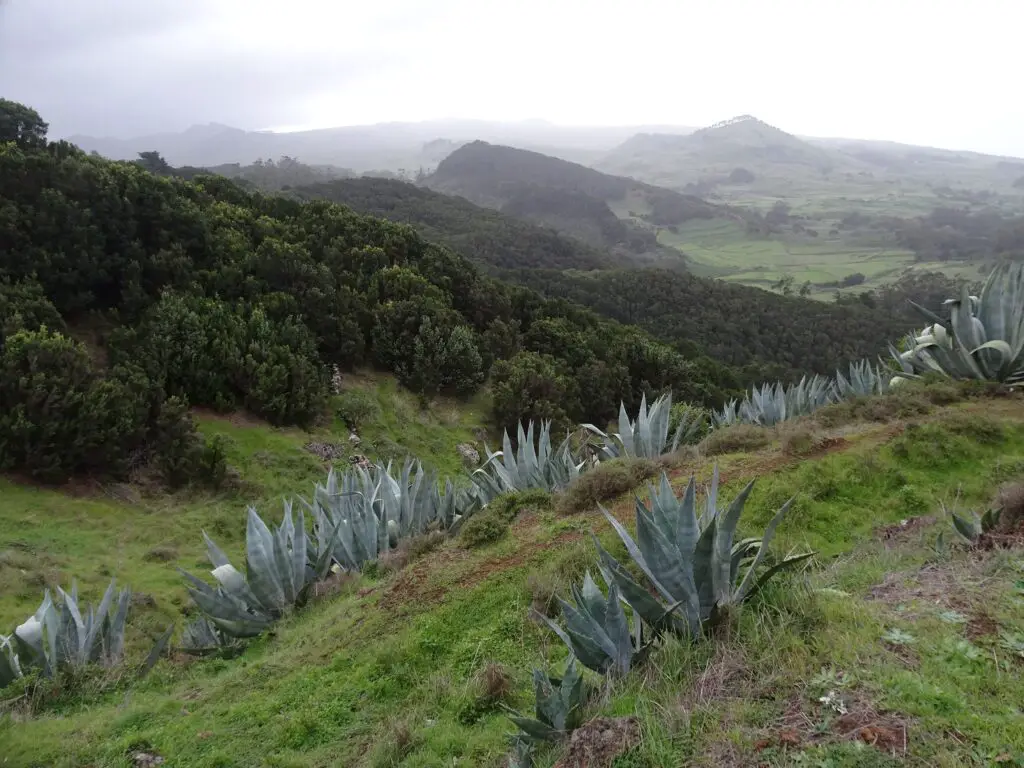
Pozo de las Calcosas
Your next stop should be Pozo de las Calcosas, at the northeastern tip of the island. The old fishing village has been transformed into a modest summer resort for the people of El Hierro but if you come during any other time of the year, you’ll likely have the atmospheric place to yourself. You can explore its tiny cobbled alleyways or take a dip in the nearby natural pools.
Charco Manso
Drive east through a beautiful landscape of pastures and tiny wine-patches to the natural pools at Charco Manso. While the sea usually is too rough for swimming, the amazing rock formations make for a worth-while destination. There are multiple caves in the rocks surrounding the pool as well as an impressive rock arch.
Tamaduste
The east coast of the island is your next destination. Drive back to Valverde and continue east to Tamaduste, a small village with a pretty bay that is perfect for swimming.
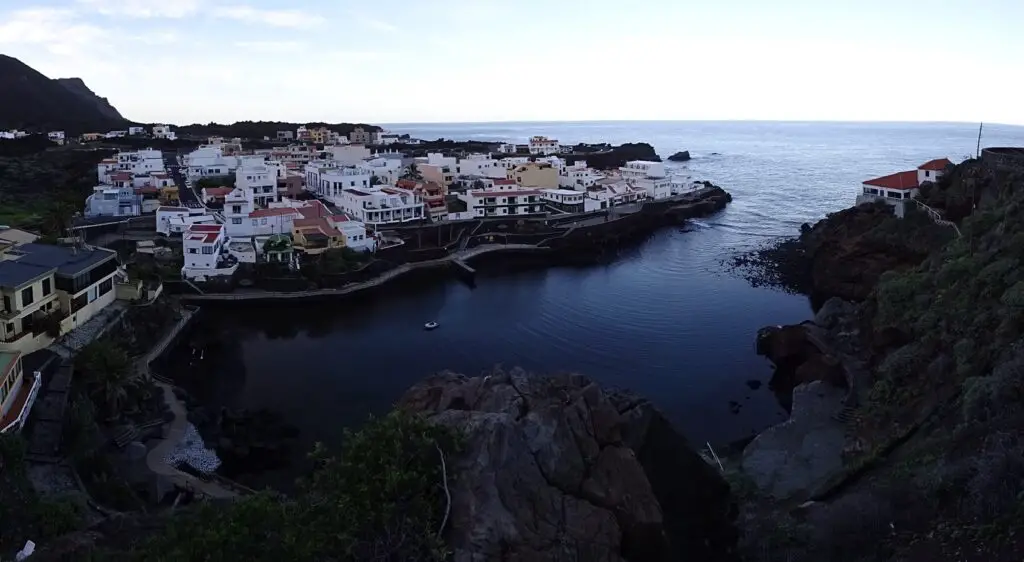
If you’ve still got energy for a hike, you could follow the coastal path north for half an hour to visit the wild Playa Fortaleza.
Las Playas and Roque de la Bonanza
Follow the coast south past the small port and through a couple of tunnels to reach Las Playas, a bay surrounded by an impressive sheer cliff-face. The Roque de la Bonanza stone arch off the the coast is another symbol of the island. At the southern end of the bay is El Parador, El Hierro’s fanciest hotel.
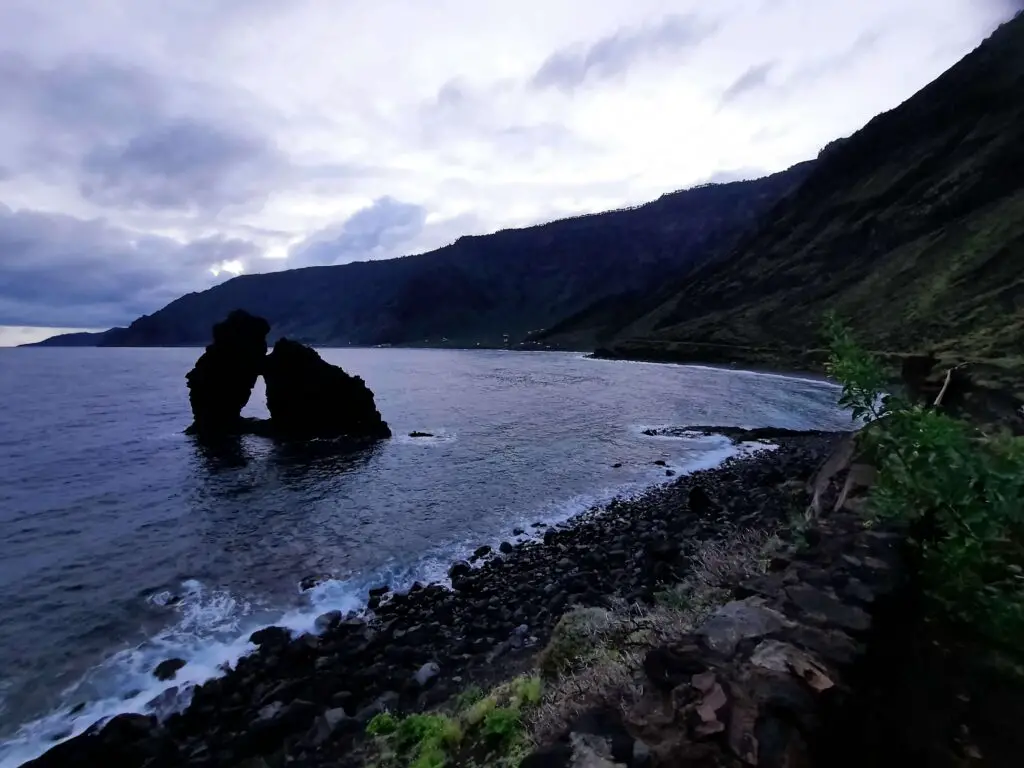
Dinner at Timijiraque
If you’re in the mood for fancy dining, you could drop by the restaurant inside the El Parador Hotel. If you’re on a budget, I suggest stopping in the tiny fishing village of Timijiraque on your way back for a wonderful seafood dinner at Bahía Timijiraque (Try the lapas (limpets) – they’re fantastic!).
Day 2: Central and Northern El Hierro
Day 2 is all about exploring the wooded centre of the island and the pleasant El Golfo Valley in the north. Have breakfast at or near your accommodation and then set of early for the higher reaches of the island.
Mirador de Isora and Mirador de las Playas
For me, two of the best viewpoints of the island can be found near the village of Isora along the road between Valverde und El Pinar. Both of them afford wonderful vistas of the Las Playas Valley, including the Parador Hotel and the Roque de la Bonanza.
Hiking through the Laurel Forest at La Llania
Drive west through the centre of the island until you reach the laurel forest at La Llanía. This is a fantastic spot for a stroll through an otherworldy landscape of gnarled, moss-grown trees.

There are three trails of varying duration, the shortest of which takes about an hour to complete. All of them pass the Hoya de Fireba, the biggest crater on the island, which can best be viewed from the Mirador de Fireba at its south western edge.
Wine-Tasting in La Frontera
Wind your way down into the Golfo Valley through a series of switch-backs that offer some fantastic views down to the coast, before reaching the cute village of La Frontera. Drop by at the D.O. El Hierro to learn about the local vineyards. The island is Europe’s southernmost wine-growing region. You can learn about the strenuous production process on the island’s steep slopes and try the local wine in the beautiful historical bodega.
You’ll have to call ahead ([+34] 922 559 622) on the day before to book your visit. They’re open from Monday to Friday from 8AM to 1PM. Check their website here.
Iglesia de la Candelaria and Lunch at Joapira
Take a peek inside the nearby 19th-century Iglesia de la Candelaria and climb up to the bell tower atop the nearby hill for great views of the surrounding valley and coastline.
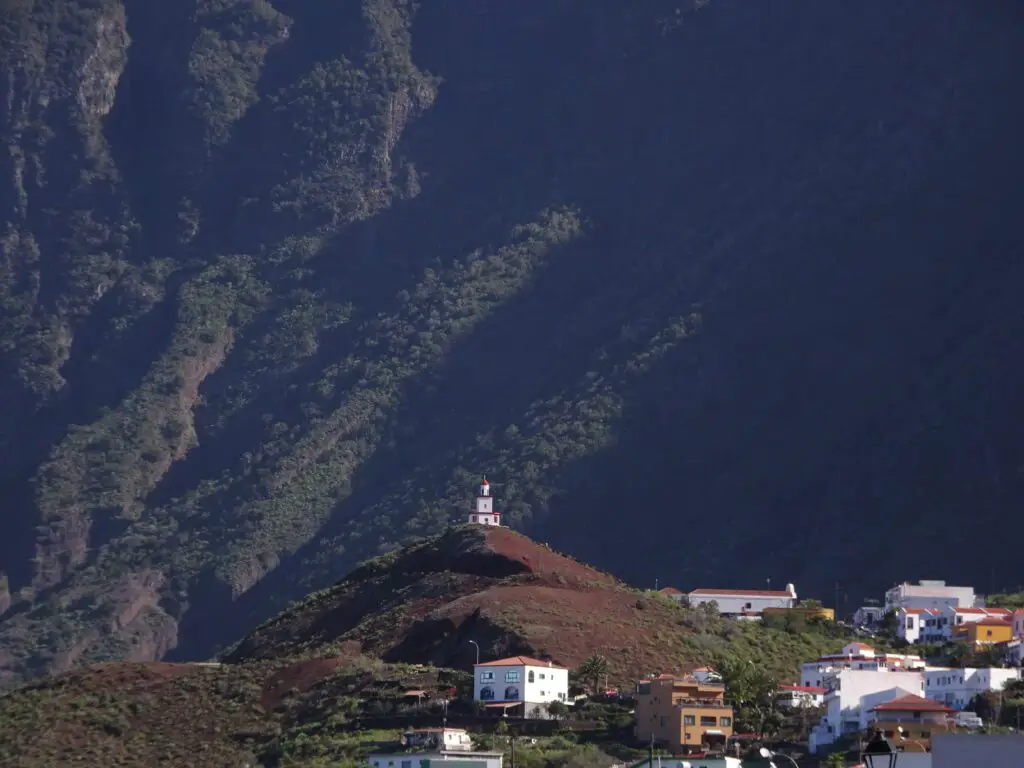
If you’re hungry, I recommend you drop into Joapira, right across the small church square, where you can try a Canarian speciality like the wonderful Carne Fiesta.
Meet the giant lizards at the Ecomuseo de Guinea
The Ecomuseo in the hamlet of La Guinea should be your next stop. Here you can visit parts of a huge lava tube and get acquainted with the endemic Giant Lizards of the Island in the Lagartario breeding station. Afterwards you can explore the open-air museum recreating the traditional living style of El Hierro through furnished houses from the 17th to the early 20th century.
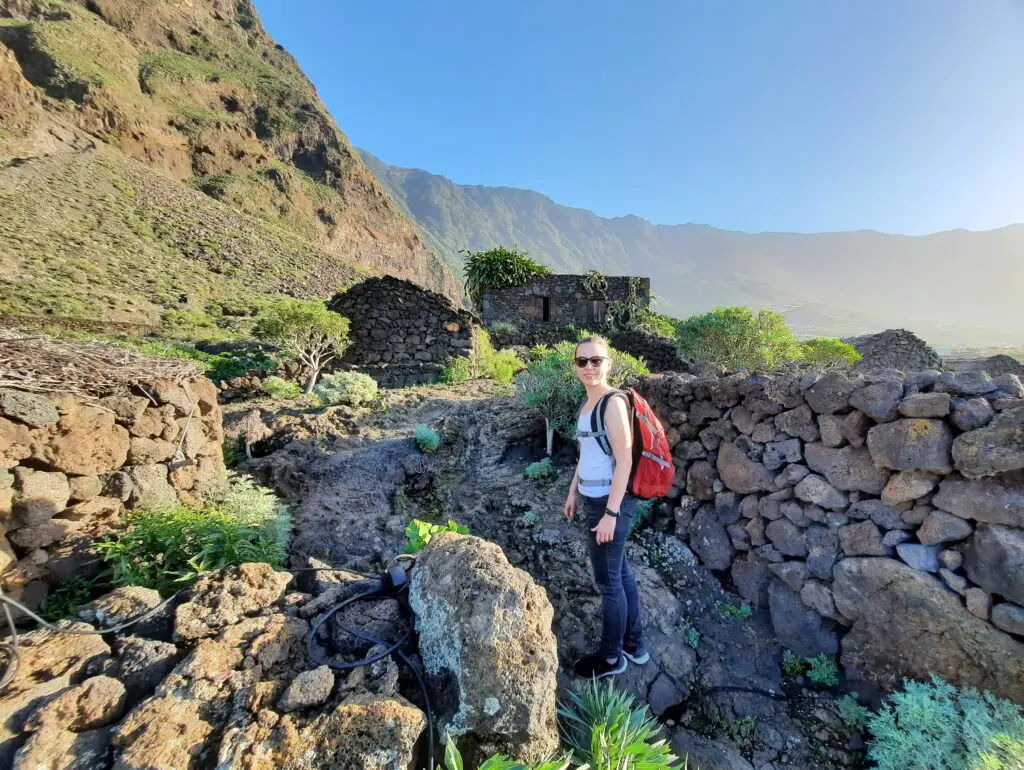
Swimming at Charco Azul
In my opinion, this is the coolest swimming spot on an island full of natural swimming pools. You can take a dip in a pretty open tide pool, but I suggest using the one in the partially open lava tube, which is certainly more atmospheric. Just make sure the sea isn’t too rough, as it can still wash over into the pools when you don’t expect it.
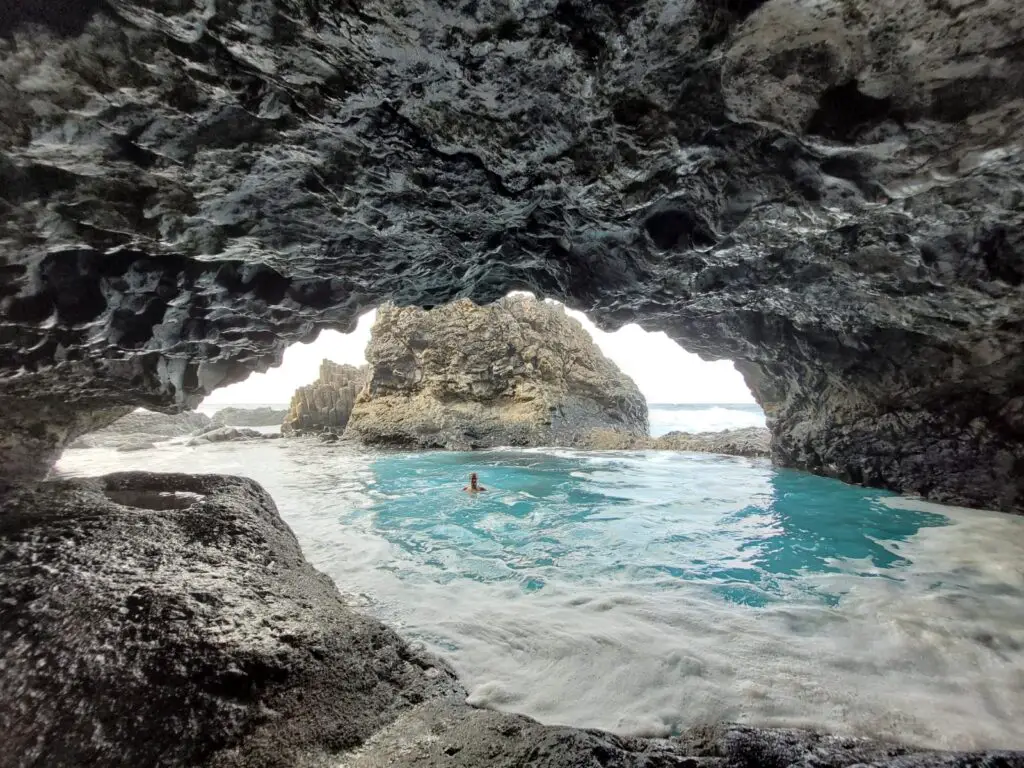
Afterwards, you could take a stroll through the centre of nearby Tigaday village and have dinner in one of the many restaurants lining the main street.
Day 3: Western and Southern El Hierro
On your third day, explore El Hierro’s wild western part. Windswept Juniper Trees, mysterious rock carvings and a lighthouse at the end of the world await you in this unique part of the island.
El Julán Archaeological Site
This fascinating Archaeological Reserve on the southern slope of the island is home to a series of centuries-old petroglyphs as well as several lookout points and a traditional meeting place constructed by El Hierro’s native Bimbache People.
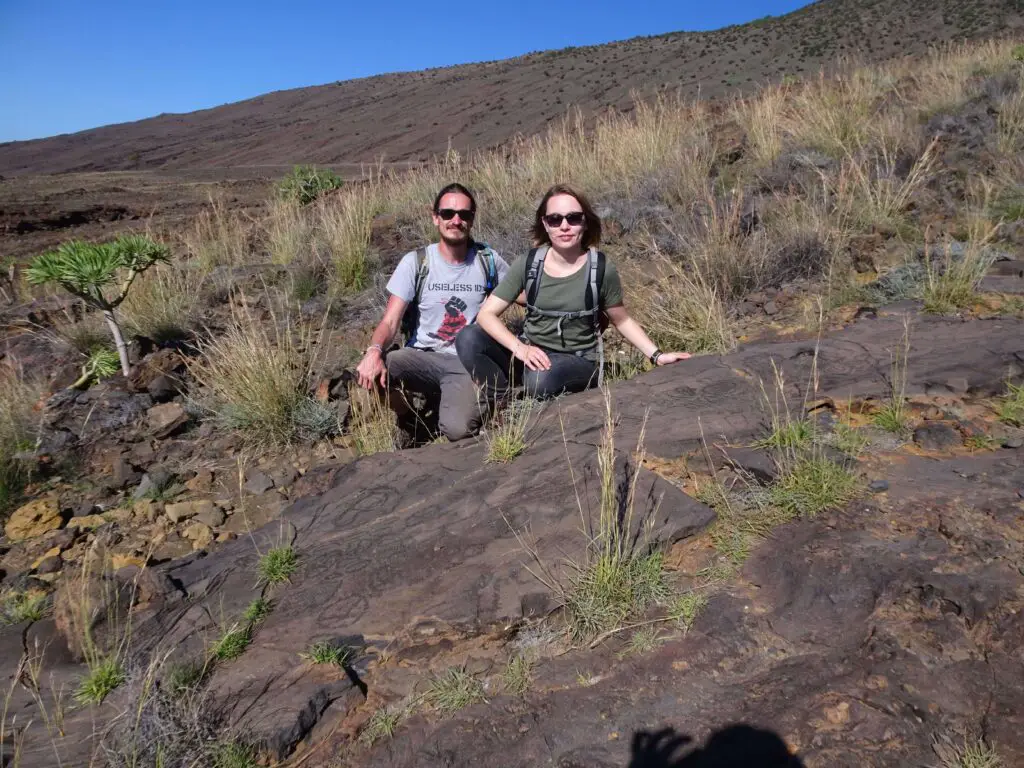
These places can only be visited duwring an interesting guided tour, which you have to reserve at least a day in advance. The contact info can be found on the website of the cultural park.
Ermita de la Virgen Sanctuary
Home to the islands most venerated religious statue, the blindingly-white Ermita de la Virgen is surrounded by pretty enclosed courtyard and well worth a short visit. Don’t miss the nearby Cueva de Caracol, featuring a series of caves dug into the cliff face which served as shelter for shepherds in bygone centuries.
The Juniper Trees of El Sabinar
Continue up the nearby hill until you reach yet another of El Hierro’s symbols. The windswept Juniper Trees of El Sabinar might be gnarled and bent by the incessant trade winds, but they nonetheless keep on growing in unusual twisted shapes.
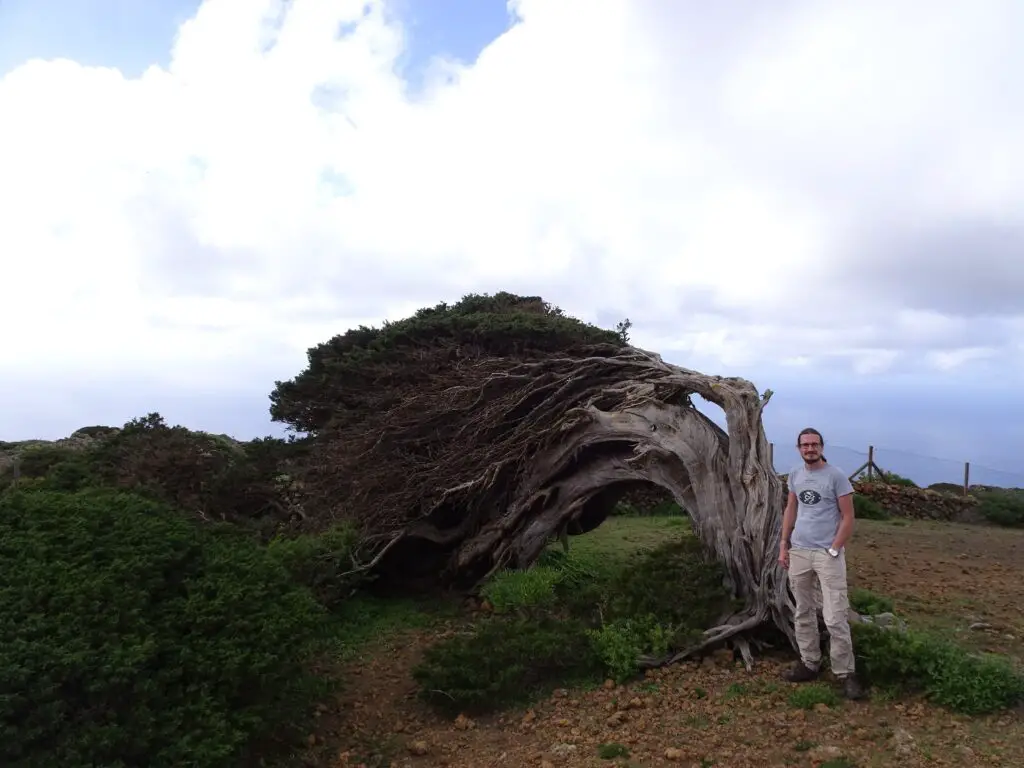
You can follow a short circular walking trail through this magical landscape to reach the impressive viewpoint Mirador de Bascos.
Faro de Ochilla
Europeans considered the western edge of the island near the Faro de Ochilla Lighthouse the end of the world for a long time. Until the late 19th century, the Prime Meridian even used to run nearby and there is a small monument commemorating the fact. You can also explore the Cueva del Acantilado, the remains of a huge lava tube, and traverse it to reach a viewpoint high above the clashing Atlantic Waves.
Playa Verodal
Continue north through the beautiful, wild landscape of La Dehesa until you reach Playa Verodal on the western coast of the island.
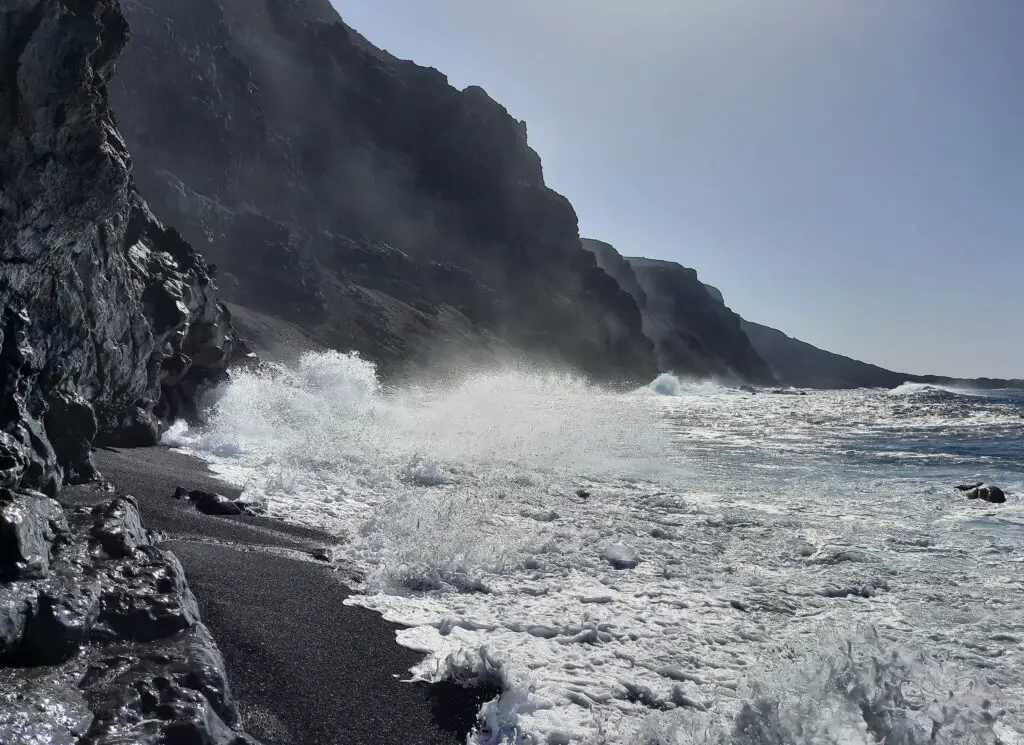
The pretty black sand beach is sometimes referred to as the best beach on the island. The waves here are often rough, though, so make sure to check the situation before going for a swim.
Dinner at Mirador de la Peña
Follow the road east and cross the entire El Golfo Valley, before traversing the tunnel to the village of El Mocanal. From there it’s only a short drive to the Mirador de la Peña, which offers a wonderful view over the northern half of the island.
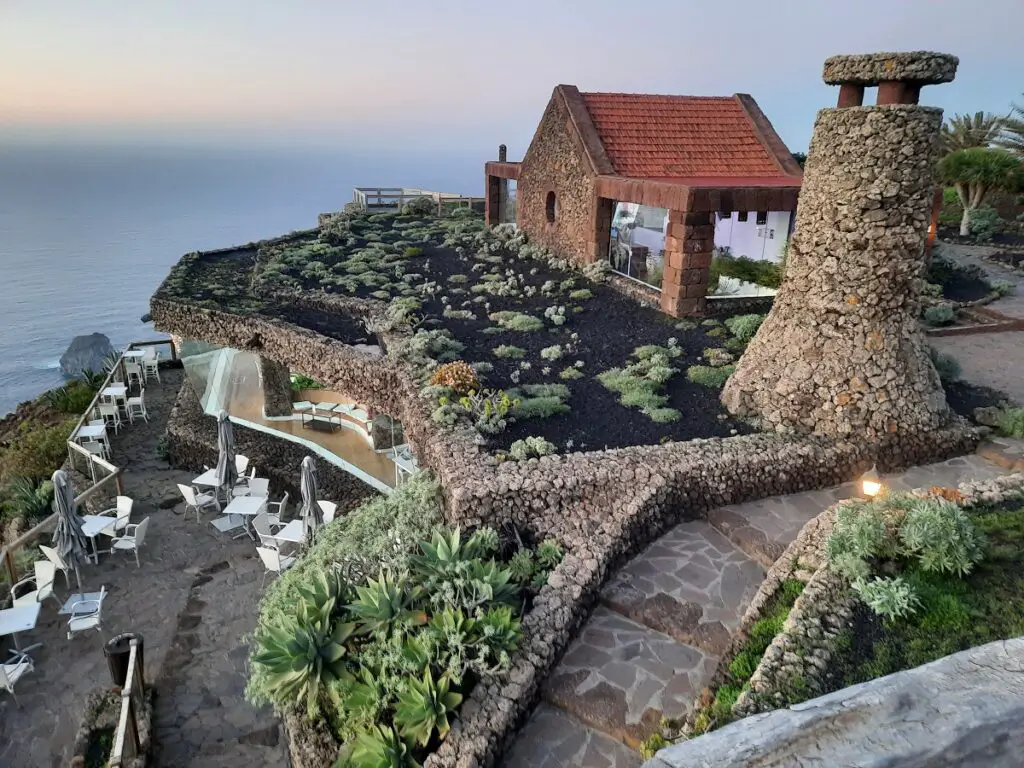
Designed by famous Lanzarote architect Cesar Manrique, the unusual Mirador is a great place to have dinner. The menu features plenty of local favourites like Cabrito frito (goat roasted in El Hierro style). What better way to top off three days of exploring this beautiful island than by having dinner in this unique place?
If You Have More Time
With more than three days, you could take more time checking out the sights described above. El Hierro definitely rewards aimless exploring and there are countless amazing hiking trails allowing you to slowly explore the island.
The best of the bunch is the fantastic Camino de la Virgen, which traverses almost the entire island from the Ermita de la Virgen in the west to Valverde in the east. At 28km, you’d need to set aside an entire day for the hike, but I can tell you that it’s well worth your while!
Scuba Divers flock to El Hierro to explore the subsurface wonders of the ‘Mar de las Calmas’ Reserve. The village of La Restinga has many diving schools offering group dives and rental equipment. I went with Arrecifal and was very happy with my experience.
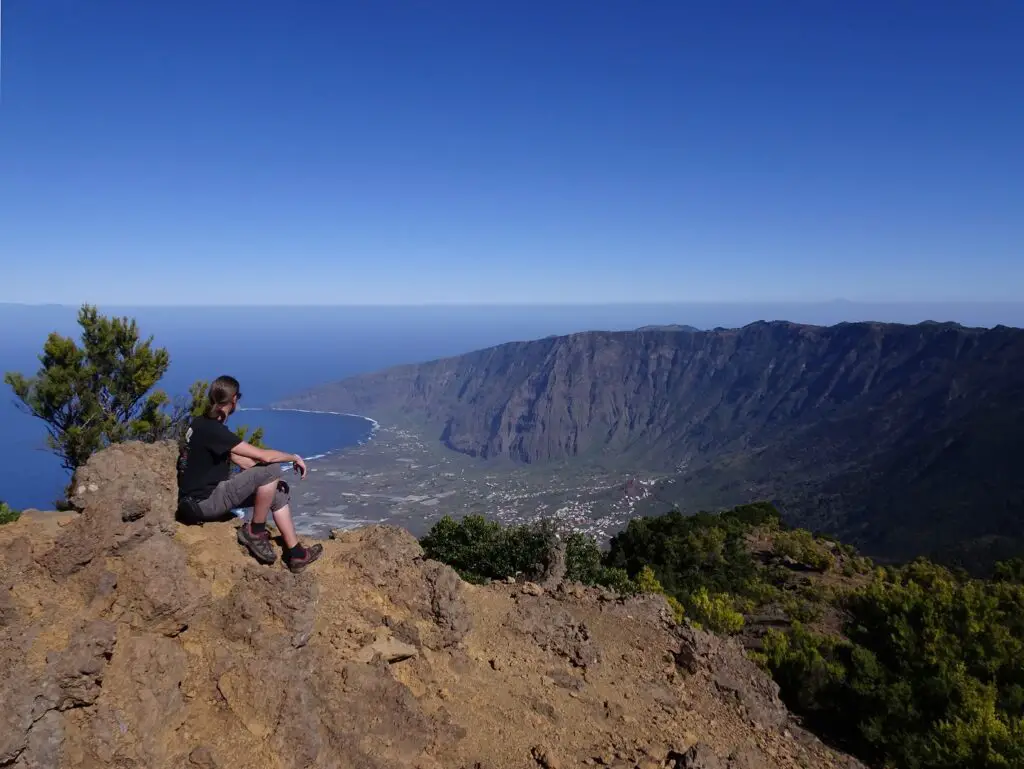
Apart from that, there are a number of small museums on the island, covering natural and cultural history. Among these, the Centro de Interpretación del Geoparque El Hierro near La Restinga, detailing the volcanic history of the island, arguably is the most interesting but the Reserva de la Biosfera in Isora is also worth checking out.
El Hierro Tourist Pass
All the museums on the island, as well as the Arbol Garoe can be visited by using the Pasaporte El Hierro, a combined tourist pass. It’s sold for 17,95€ at Valverde’s tourist information office as well as at all the Museums featured on the pass. You can see the sites included here.
Map of El Hierro
Most places mentioned in the itinerary can be found on this map of the island.
Where to stay in El Hierro
The island is small enough to make staying in a single location and exploring El Hierro from there a viable option. The most useful bases would be the capital of Valverde or the pretty Golfo Valley in the north.
If you want to stay at a truly unique place, Hotel Puntagrande is listed in the Guinness Book of World Records as the smallest hotel in the world. Converted from an old marine trade station, it has a prime location on a lava tongue jutting out into the Atlantic Ocean.
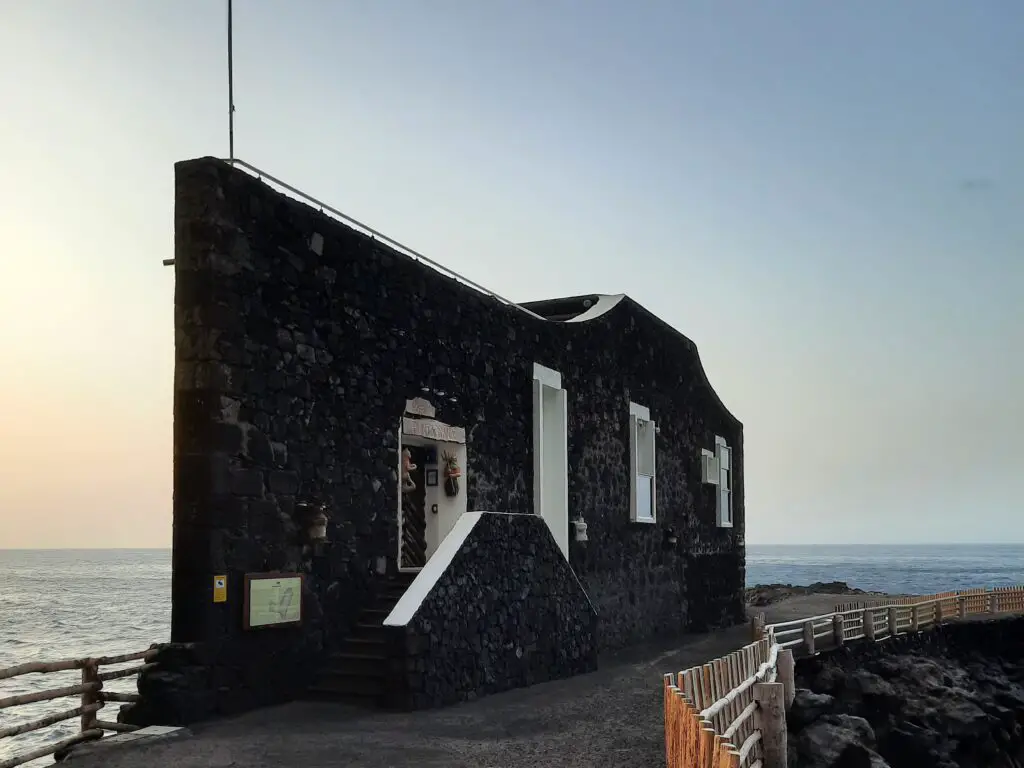
The wonderful Apartments at El Sitio are located in a cluster of historical stone houses sitting in the beautiful surroundings of La Frontera. There is a pretty common garden with incredible view into the Golfo Valley.
If you have to pinch your pennies, staying in Valverde might be a good idea. One option would be pretty Hotel Boomerang, which is close to the main square and has a café attached, which serves awesome breakfasts.
Have a look at the map of El Hierro above to find more options.
See Also
15 Unmissable Things to Do on El Hierro, the Canary Islands’ Hidden Gem
Walking the Camino de la Virgen – The Best Hike on El Hierro
6 Fun Things to Do in Valverde, El Hierro’s Tiny Capital
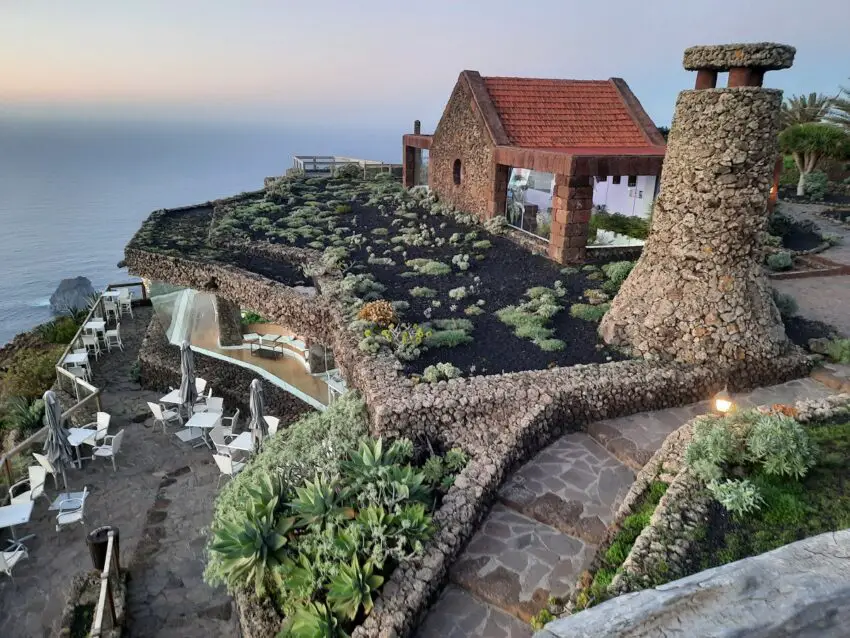
Great article thanks. Looks magical. I’ve been to La Gomera a couple of times, and for those who like that place and vibe, this looks very enticing.
Hello Andrew, I haven’t been to La Gomera yet, but apparently the landscape and vibe of the three western Canary Islands are quite similar, especially as they see far fewer tourists than the eastern islands. In any case, I can very much recommend checking out El Hierro – it’s both beautiful and super laid-back.